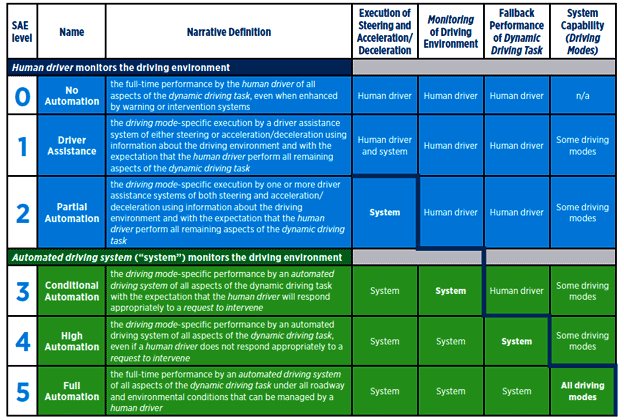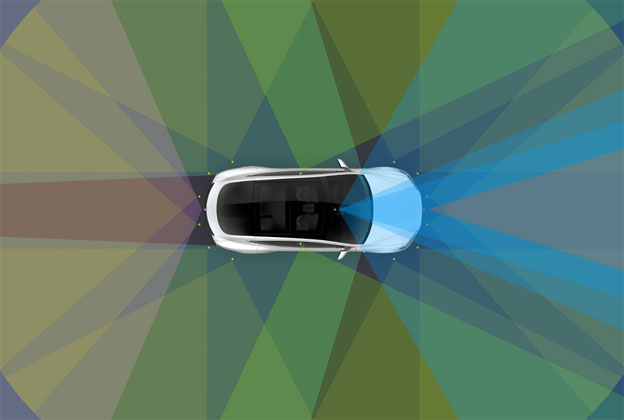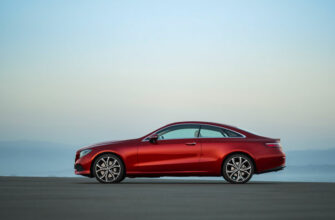The appearance of autonomous cars is expected by the early 2020s only. By this time the engineers, scientists and regulators will have to do a lot. Meanwhile, a pioneer in self-driving cars and founder of Tesla Motors Elon Musk has said that in the next six months a full autopilot for Tesla cars will be ready.
This information appeared in Twitter of Elon Musk on January 23, when he answered questions about the pace of update of Tesla semi-autonomous autopilot. In circumstances when the authorities have not yet announced the rules for the appearance of cars with the autopilot on the roads, and did not give permission, people wonder what is there value of full self-drive capability? Answering this question, Musk has said that “safety should improve significantly due to autonomy features, even if regs disallow no driver present”. Regarding the dates when we will see noticeable results of the transition from technology of “enhanced autopilot” to full autopilot Tesla, Elon said – “3 months maybe, 6 months definitely.”
International classification of autopilots
Forbes supposed that Tesla may be able to attain something approaching Level 4, according to the classification developed by the Society of Automotive Engineers.
International Society of Automotive Engineers (SAE), based in the USA is a professional association of the engineers focused on transport industries such as automotive, aerospace, and commercial vehicles. In addition to its standardization efforts, it is also involved in trainings, professional certification, and promoting science, technology, engineering, and mathematics.
4th level of autonomy refers to the car that can be autonomous almost all the time, within determined parameters. 5th, highest, level of autonomy – when the car with the autopilot generally does not need a driver under any circumstances.
SAE distinguishes 6 degrees of autonomy of driving from 0 to 5. The first three imply human driver monitors the driving environment:
- no automation;
- driver assistance;
- partial autopilot (cruise control).
The next three levels – autopilot system monitors the driving environment:
- conditional automation without dynamic driving (lane change, turning, signaling);
- igh automation when the autopilot is responsible for steering, acceleration, braking, traffic monitoring, performs the functions of the dynamic driving;
- full automation.

There are no laws regulating autonomous vehicles on the roads of the USA. In September 2016, the U.S. Department of Transportation has just set basic guidelines for the implementation and testing of autopilots. However, in America since 2009, Google is testing its Autonomous car. The car ride companies Uber and Lyft also test the taxi with the autopilot.
The European Union has some strict regulations on conducting experiments with driverless vehicles on public roads. Europe is more focused on the development of public transport, so in spite of strict rules several buses with autopilot are tested in Finland, Switzerland, and the Netherlands. As we recently wrote, a small bus without driver Easymile EZ10 operates in France. Autopiloted vehicle delivers food in test mode in Norway now. In April 2016 a convoy of trucks of DAF, Daimler, Iveco, MAN, Scania and Volvo passed across the Europe. Part of trucks in the platoon has autonomous control. Heading vehicle set the speed and route of convoy.

Like Mcity project of University of Michigan, Shanghai has launched large-scale test of self-drive cars on the special ground of 100 square kilometers. By 2020, Shanghai plans to become a hub for 10 thousand cars without a driver. NuTonomy has launched a driverless taxi service in Singapore. There’s also Delphi offers an on-demand ride service with autopilot. In Tokyo, Toyota also conducts tests of driverless cars.
In Russia, Autonet Association was established by NAMI, KamAZ, Sollers and GAZ Group with the aim to unite efforts in the development of vehicles with partial or full autonomous control. It is expected that the budget of 2017 year for the development of autonomous control systems will amount to 7 billion rubles, 50% of which will be allocated by the state and 50% by manufactures. The roadmap of the project has 3 steps. The first stage by 2018 year will implement autonomous trucks and buses on the territory of KamAZ plant. Next phase (until 2021) will deliver unmanned long-haul tractors. On the third stage, by 2035, Russia will have full automation of buses and trucks working over long distances.
When will we see cars with full autopilot?
Global automotive companies are more conservative than Tesla Motors, regarding to plans of launching cars with the autopilot. Toyota and Renault-Nissan plan to introduce self-driving cars of 4-th level by 2020, Ford – by 2021.
The experts are even more cautious. Andrew Moore, Dean of Carnegie Mellon University’s School of Computer Science, believes that from Level 5 autopilot we are separated by decade. Road map of the European Road Transport Research Advisory Council (ERTRAC) expects reaching Level 4 only by 2020-2030 years. It forecasts that the global market of autonomous vehicles will reach 44 million cars by 2030 year.
According to Gill Pratt, CEO of Toyota Research Institute, current vehicles from automakers including Mercedes-Benz and Tesla, with its semi-automated Autopilot feature, to prototype robotic cars from Google, Uber and Volvo are still at Level 2, with varying levels of advanced driver-assist functions. And it is very difficult to say when we will reach Level 5.
The successes and failures of Tesla’s autopilot
In January, Tesla Motors published the results of production and deliveries in 2016. Production rose by 64% to 83’922 vehicles. Sales grew by 50.9% and totaled 76’230 electrical cars.
By the way, watch the video to see work of Tesla’s autopilot, I think you will be impressed.
However, we must bear in mind that the Tesla’s autopilot is not a system of Level 5 (only Level 2), and it requires driver’s control. A painful reminder of it was the fatal accidents with Tesla Model S in May 2016.
Sources: Forbes, Society of Automotive Engineers, ETSC, The Guardian, Accenture, KamAZ, NuTonomy, ERTRAC, ETSC, Tesla Motors, NHTSA




